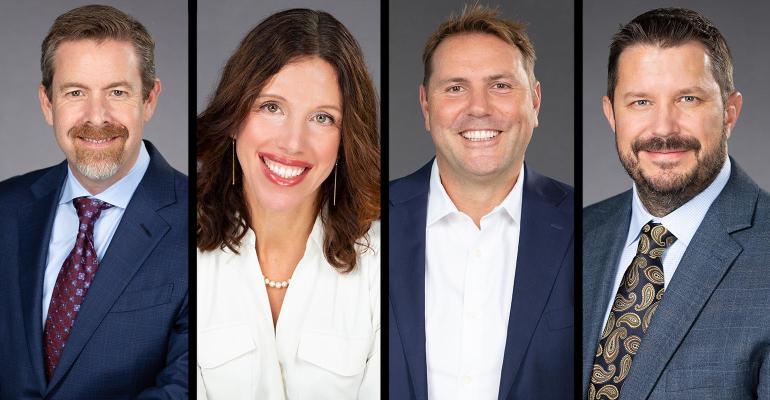Started in 1997 as an asset management shop, San Francisco–based RIA Ensemble Capital Management didn’t begin growing in earnest until an internal succession was underway seven years ago. The new owners have since grown the firm from $350 million in client assets to $1.5 billion, increased staff from five to 16 and built out the financial planning side of the business.
From 2018 to 2021, the firm nearly doubled AUM year over year, according to data analyzed by WealthManagement.com’s RIA Edge and Discovery Data. A focus on adding talent to accommodate the rapid expansion while maintaining client service earned Ensemble Capital a spot on the inaugural RIA Edge 100 list, published in February.
Nearly all the firm’s growth is attributable to referrals and expanded share of wallet, according to President and CIO Sean Stannard-Stockton, driven by investments in talent and technology.
When Stannard-Stockton joined in 2002, the RIA was still named after founder Curtis Brown and primarily focused on a proprietary equity strategy. While it still boasts healthy investment returns for clients, the name was changed to Ensemble in 2004 after Stannard-Stockton became a shareholder. A chartered advisor in philanthropy, he soon spearheaded a focus on charitable planning that now accounts for about a quarter of the firm's assets.
“An ensemble is a group of people or things deliberately put together to work in harmony,” said Stannard-Stockton. “We think about that in terms of the portfolios we’re constructing but, also, our team-based approach.”
Stannard-Stockton, along with his wife and Director of Business Operations Cathy Stannard-Stockton; Matt Pearson, who heads up operations and compliance; and Chief Advisory Officer Ludo Thomasson, began the process of buying out Brown in 2015. He retired two years later. Pearson has been with the firm since 2008 and Cathy Stannard-Stockton since 2010.
Thomasson, a CFP, joined in 2014 to help bring the firm from a “light planning model” to “full-blown service.”
“We learned along the way that wealth planning is as important, and even more important, than relative performance numbers for many of our clients,” Stannard-Stockton explained. “At that point, we were really focused on growth and investing in the tech stack and the overall process.”
At the time, the firm was running on Schwab’s PortfolioCenter platform, “a very basic, sort of free service,” said Stannard-Stockton, and Ensemble was at a stage in its growth where it was becoming increasingly difficult to provide the personalized services it wanted to.
“What we recognized in 2015 was that to really get to that next level of a billion and beyond required figuring out how to customize portfolios and client service—but doing it at scale,” said Stannard-Stockton.
The significant investment the firm made in its cloud-based Tamarac platform, which includes a CRM and trading and reporting tools, was a “big leap of faith,” he said.
“We built out this very robust system to allow an advisor to send customization requirements to the trading team and then have that be encoded into our system and make sure we're truly managing customized portfolios at scale.”
“What it really required was a big shift in our mentality,” explained Stannard-Stockton. “We had to go from saying, ‘Well, once we grow revenue and have more cash flow, then we’ll invest in the business,’ to reversing that and saying, ‘Well, the only way we’re going to grow is through investing in the business.”
The new leadership team made its first two hires the same year, adding an operations manager and an MIT-educated investment analyst and CFA. In 2016, they brought in a portfolio manager, another CFA who eventually became a shareholder in the firm and now directs portfolio management. In 2017, the firm added another operations associate and another CFA investment analyst.
Two new wealth managers were hired the following year, one of whom is now also a shareholder and another who is a CFP and a certified divorce financial analyst. Since then, Ensemble has added five more positions—a CFP investment associate, a wealth manager who is both a CFP and a certified investment management analyst, a senior operations associate, a client service manager, and a director of talent and culture.
What used to be a gang of four making all the decisions has now become teams of people that need coordination, said Stannard-Stockton.
“One of our most critical recent hires has been our director of talent and culture,” he said of Kelly Macias, who joined the firm in 2021. “She has come into what some people would call an HR function, but her focus isn’t just on benefits and things like that. It’s about driving a culture in which you are attracting and retaining the most talented people you possibly can and getting the most out of them through having them work together—and the only way that's going to work is if they think it's a great place to work, too.”
As the name implies, the client service model at Ensemble is a team-based approach. Advisors don’t have their own clients, and back office staff often step into client-facing roles.
“We really try and cut layers of connections between the client and the action down as much as possible,” said Stannard-Stockton, explaining that things like account opening and money transfers are easily handled directly by operations staff.
“We also have two full-time analysts who have no client responsibilities and are just running the investment strategy with me,” he said. “When we have a new client with a large legacy position, they come in and help analyze that position in the context of the overall portfolio with the advisory team. And so, really all the different groups are involved to some degree or another with client service.”
Business management is something with which Stannard-Stockton and the entire Ensemble investment team are intimately familiar—they base their entire strategy around business analysis.
“Really, that’s what makes us special and why we’re so successful,” said Thomasson. “Most of Sean’s time is spent analyzing businesses we’re thinking of investing in, and having that understanding allows us to apply it in the best way possible to our own business.”
Another differentiator, offered Stannard-Stockton, is a proactive effort to communicate with clients regarding investment decisions and market fluctuation. He said social media and digital communication have been invaluable in that respect.
Ensemble publishes a regular blog that has garnered interest—and brought in assets—from institutional and international investors. Stannard-Stockton admits the content can get a little wonky but said even laymen stand to benefit and that it creates an additional avenue for growth, while providing a scalable comfort blanket for the firm’s existing clients.
On top of that, Ensemble does quarterly calls to explain the nuances of stock and bond market conditions.
“Understanding what’s going on is really key,” he said.
Pointing out the firm has a client retention rate of 99.6%, he said: “Clear and direct communication with clients, treating them like the smart people they are and helping them understand what's going on in the world is one of our really big advantages—and it's why our clients have stuck with us even through periods when we underperform.”
Ensemble expects to grow net new assets by around 10% a year going forward, added to another 5% growth in portfolio performance—essentially doubling in size every five years.
“That feels like a controllable level of growth where we're driving really exceptional returns to the owners of the business,” said Stannard-Stockton. “And creating great career paths and opportunity for our talented employees. Where we're able to drive the revenue to keep investing and expanding our services, but not so fast that the wheels come off or that we feel like we don't have our arms around anything. And that's an important balance to strike.”







